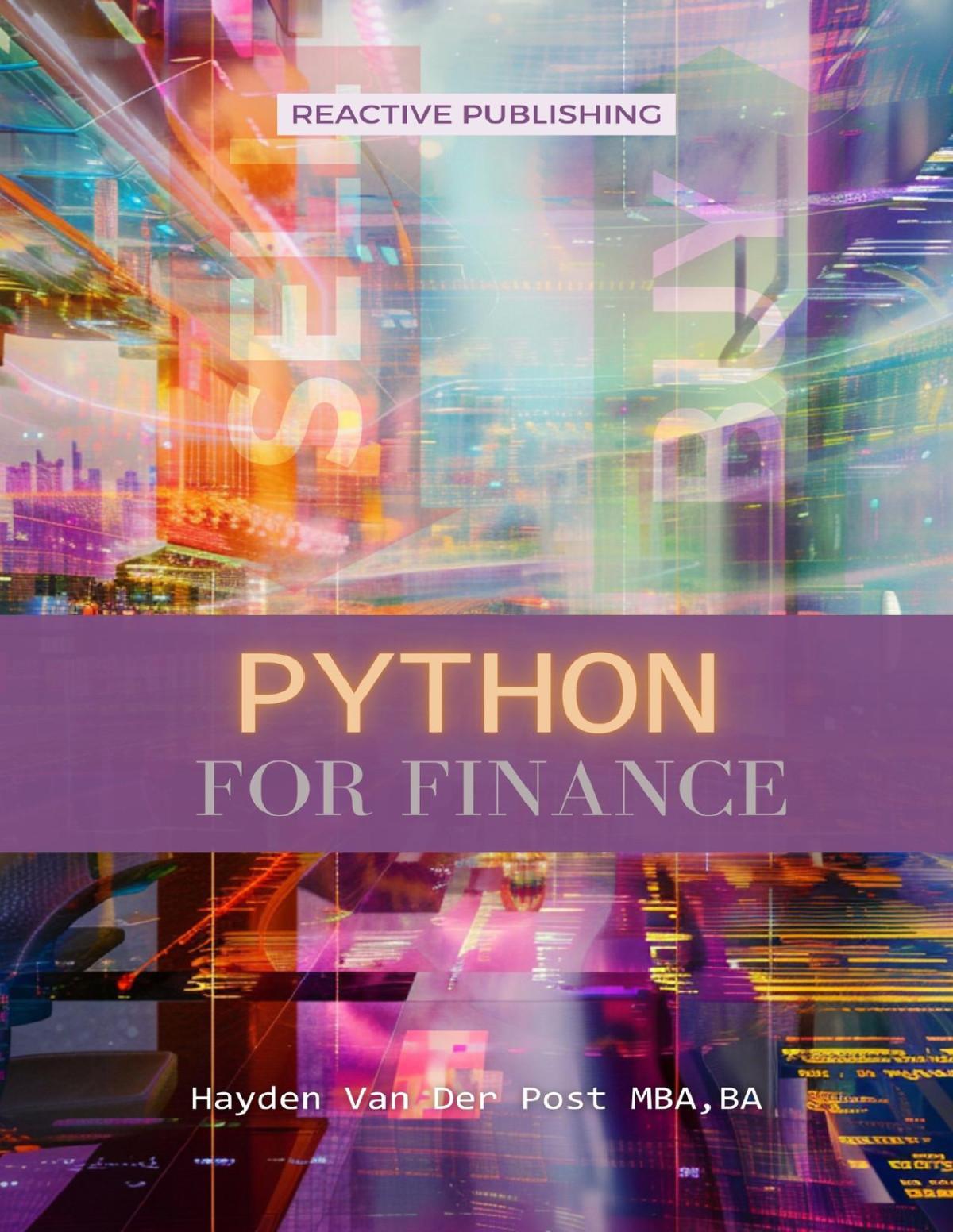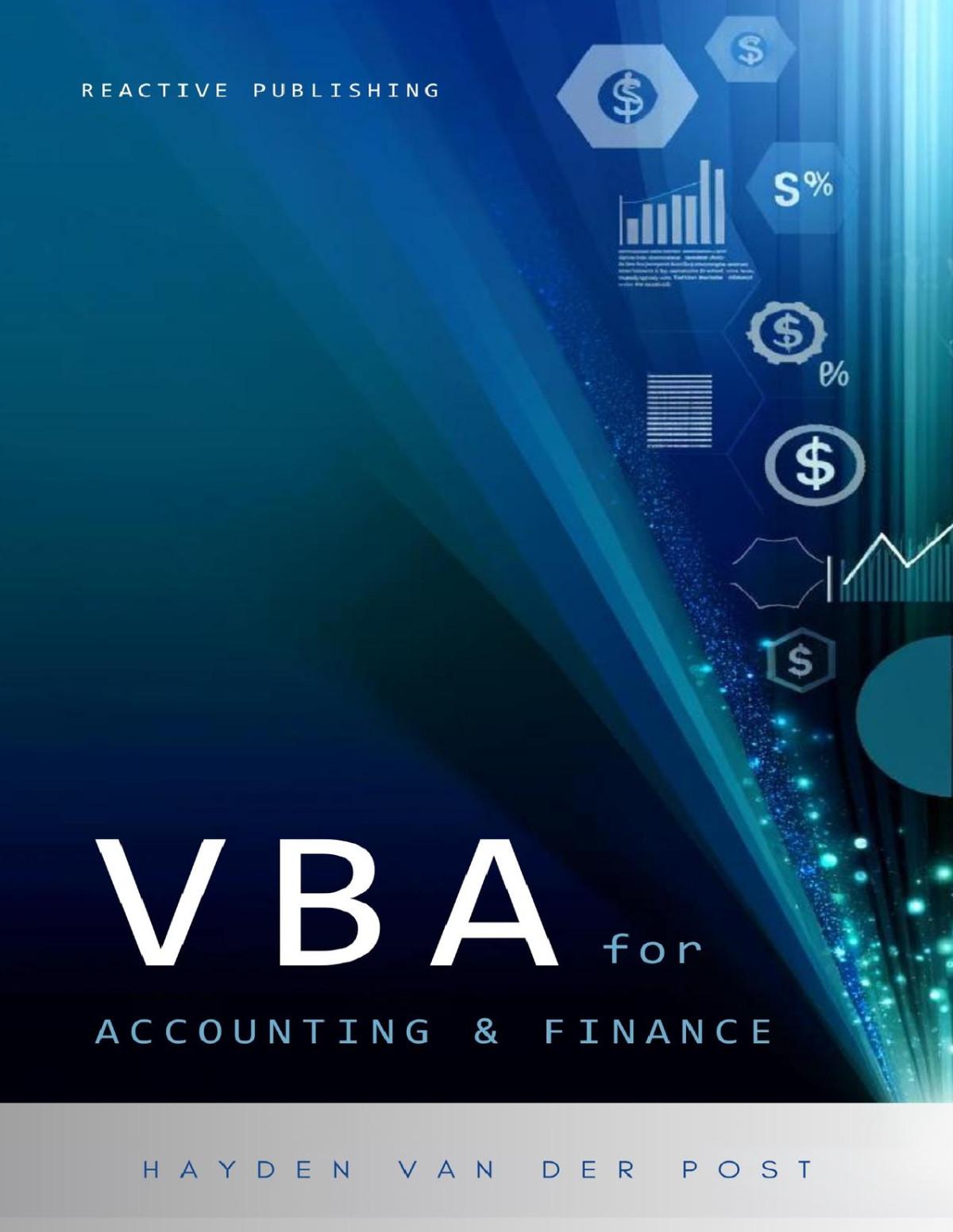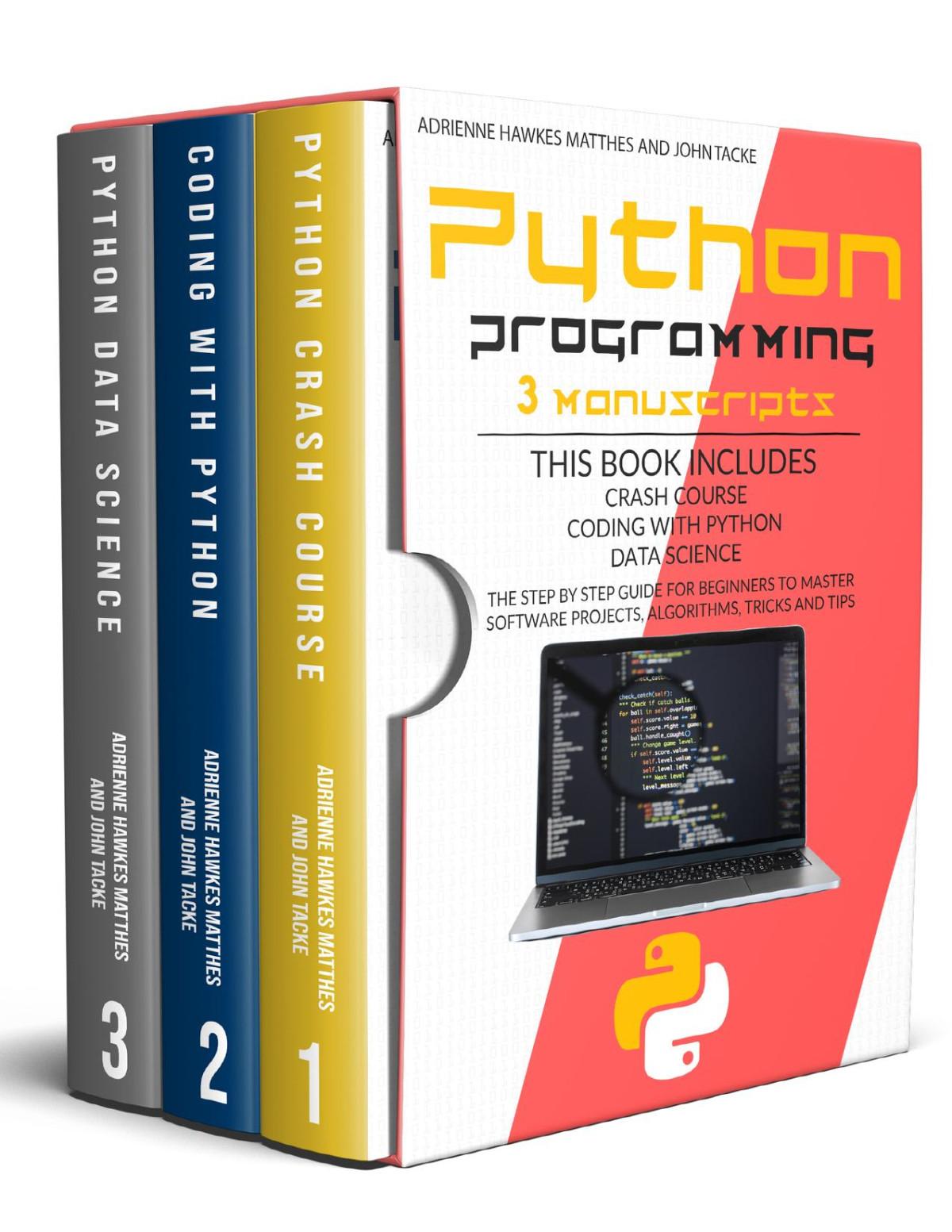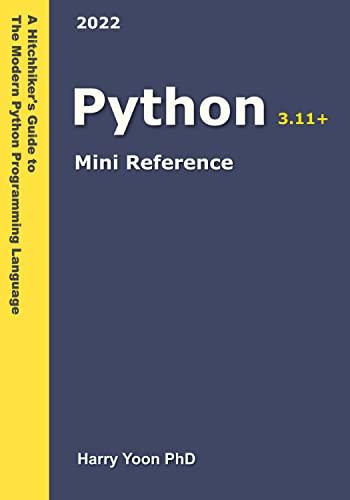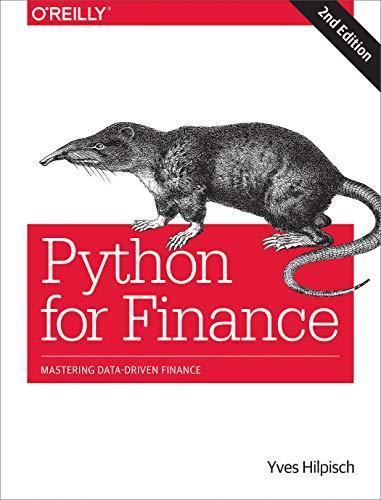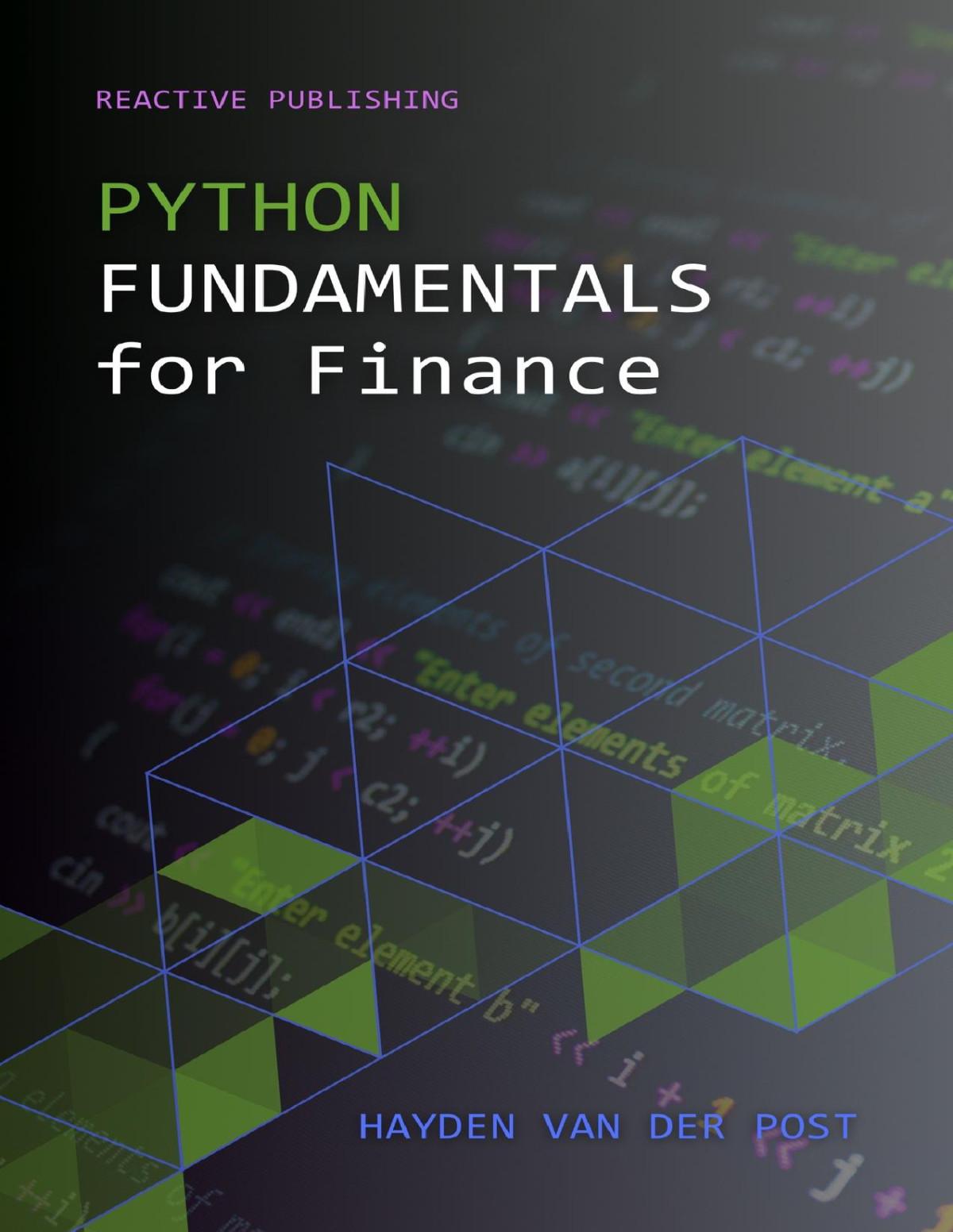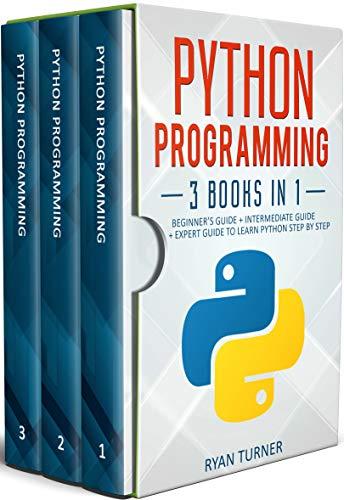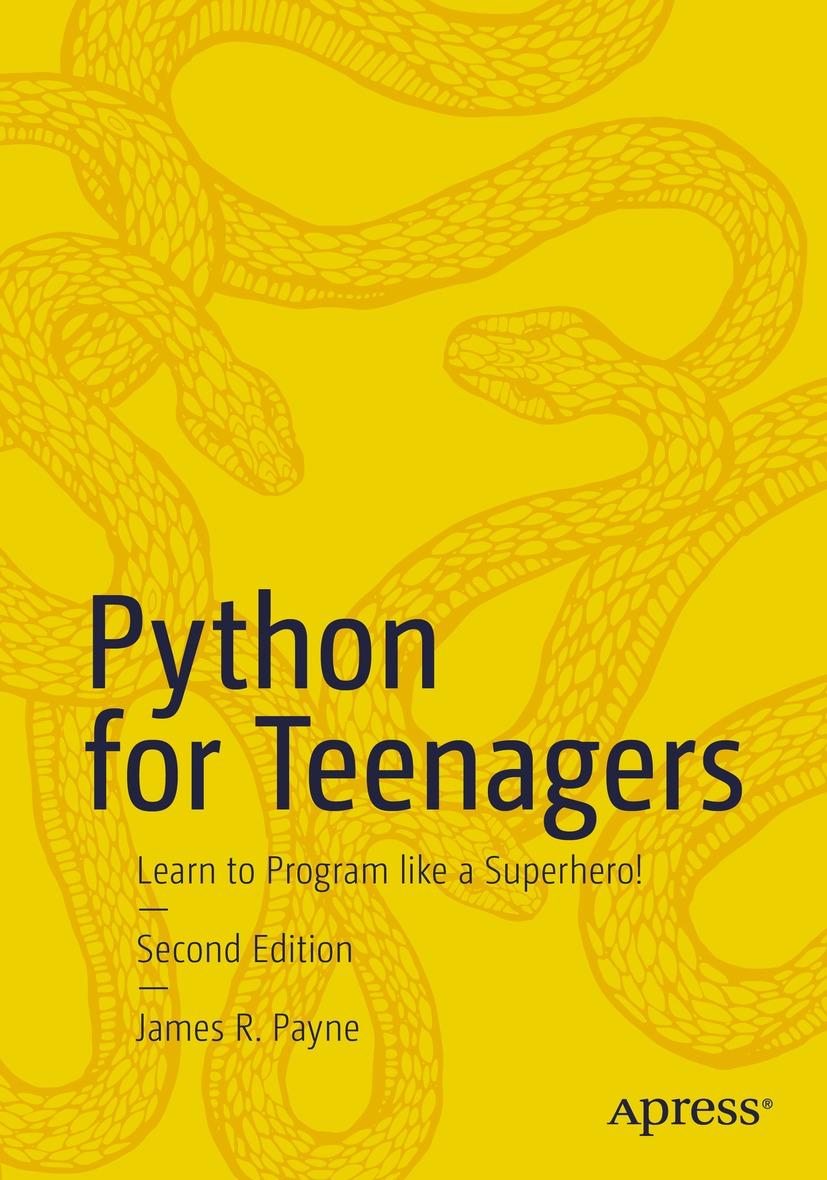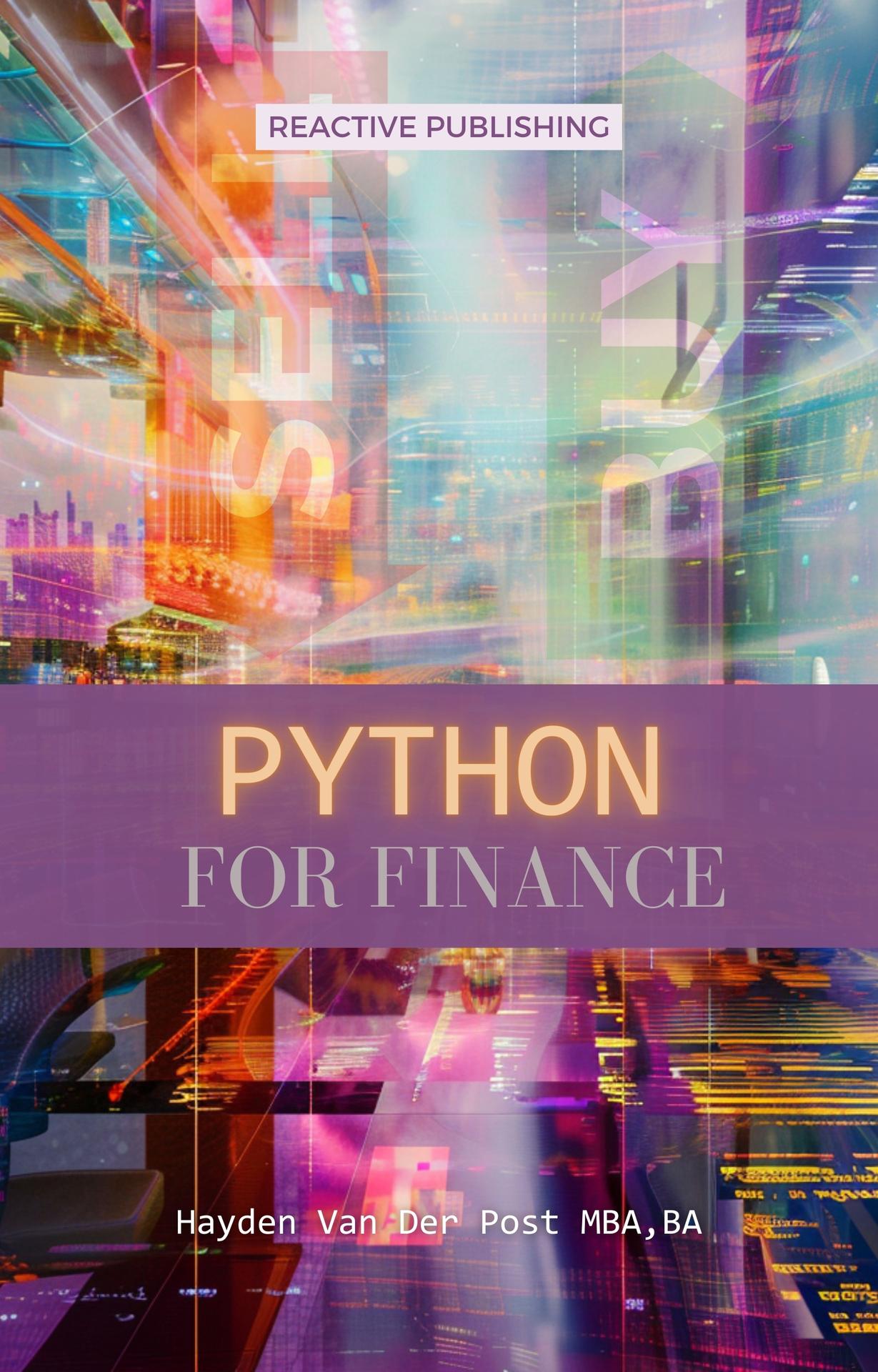CHAPTER 1: WHY PYTHON FOR FINANCE?
The integration of Python into finance can be traced back to its core attributes: simplicity, flexibility, and a vast ecosystem of libraries. Unlike its contemporaries, Python was designed with readability and straightforward syntax in mind, allowing financial analysts, who may not have a deep background in computer science, to quickly grasp and implement complex financial models and simulations.
Python's versatility is evident in its wide application, ranging from straightforward financial calculations to developing complex trading algorithms. The language's robust libraries, such as NumPy for numerical computing, pandas for data manipulation, and matplotlib for data visualization, have underpinned its utility in handling vast datasets common in finance.
The financial industry thrives on the analysis and interpretation of data. Python excels here, offering tools that streamline the process of data collection, cleaning, and analysis. Through libraries like pandas, financial professionals can manipulate and analyze time-series data, crucial for market trend analysis and economic forecasting.
Moreover, Python's Scikit-learn library has opened avenues for machine learning in finance, enabling predictive models that can assess risk, identify trading opportunities, and automate trading strategies. This application of Python for both traditional financial analysis and the cutting-edge field of
machine learning illustrates its dual role as both a foundational tool and a gateway to innovation.
The rise of Python has also led to a paradigm shift in the skill set required in the finance sector. Financial institutions now seek professionals who are not only adept in financial theories but also proficient in Python. This demand has propelled Python to a core subject in finance-related academic curricula and professional training programs.
Moreover, Python's accessibility and the community's commitment to opensource principles have fostered a collaborative environment. Financial analysts, traders, and researchers share code, develop libraries, and contribute to forums, pushing the boundaries of financial innovation.
One of the most notable applications of Python in finance is in the world of algorithmic trading. Python's capacity to process and analyze large datasets in real-time, coupled with its ability to integrate with trading platforms, makes it an ideal choice for developing automated trading systems. These systems can monitor market movements, execute trades based on predefined criteria, and manage risk, all with minimal human intervention.
Python's role in algorithmic trading is not limited to strategy development. Libraries like backtrader and pyfolio offer tools for backtesting, allowing traders to simulate their strategies on historical data before deploying them in live markets. This capability to rigorously test and refine trading algorithms underscores Python's value in reducing risk and enhancing profitability.
The incursion of Python into the financial industry is not merely a trend but a transformation. From data analysis and risk management to algorithmic trading and machine learning, Python has become the cornerstone of modern financial operations. Its simplicity, power, and the supportive community have democratized financial analysis, enabling professionals and institutions to navigate the complexities of the financial world with unprecedented precision and insight.
As we look towards the future, Python's role in finance is poised to grow, driven by ongoing innovation in financial technology. For those embarking on a journey in finance, proficiency in Python is not just an asset but a necessity, unlocking doors to new opportunities and frontiers in the financial domain.
The Growth of Python in Finance
The ascent of Python within the finance sector is a narrative of evolutionary growth, marked by pivotal developments and the strategic foresight of the financial community. This segment explores the dynamic expansion of Python's role in finance, charting its journey from a supplementary tool to a fundamental driver of financial analysis, innovation, and strategy.
Python's initial incursion into the finance industry was met with skepticism. Traditional tools like Excel, MATLAB, and C++ dominated the landscape, and the introduction of a new, seemingly less powerful language was viewed with caution. However, the early adopters of Python in finance recognized its potential for simplifying tasks that were cumbersome with existing tools. They leveraged Python’s simplicity to automate routine data analysis tasks, laying the groundwork for a broader acceptance.
The turning point came with the exponential growth of the Python community. Developers and financial professionals began contributing to a burgeoning ecosystem of libraries specifically designed for finance. This collaborative effort resulted in tools that could handle time-series data, perform complex calculations, and model financial theories more efficiently than ever before.
Quantitative finance, with its reliance on complex mathematical models and large-scale data analysis, provided fertile ground for Python's expansion. The language's ability to seamlessly manage large datasets and its capacity for rapid prototyping made it an invaluable asset for quants. Python libraries such as NumPy and pandas facilitated operations on numerical data, while matplotlib and seaborn offered advanced visualization capabilities, making the interpretation of financial models and data more intuitive.
The development of libraries like QuantLib, dedicated to quantitative finance, further cemented Python's place in the industry. These tools enabled professionals to model derivatives, perform risk management tasks, and construct financial instruments with unprecedented ease.
Python's accessibility has played a crucial role in democratizing financial analysis. With resources readily available online and a supportive community, individuals and smaller firms could undertake sophisticated financial analyses that were previously the domain of large institutions. This democratization has spurred innovation, with novel financial technologies and strategies emerging from beyond traditional financial powerhouses.
The fintech revolution, characterized by the amalgamation of technology and finance, has been significantly powered by Python. Startups and established financial institutions alike have adopted Python to develop applications ranging from automated trading systems to personal finance management tools. The language's ability to handle vast amounts of data in real-time makes it ideal for applications that require quick, accurate financial insights.
Moreover, Python's role in the rise of machine learning in finance cannot be overstated. Libraries such as TensorFlow and Keras have made it possible to apply complex machine learning algorithms to financial data, enabling predictive models that can forecast market trends, enhance trading strategies, and identify risks with a level of accuracy previously unimaginable.
Today, Python stands as the lingua franca of the financial industry. Its adoption by leading financial institutions, universities, and regulatory bodies worldwide speaks to its unmatched capabilities and the value it brings to the finance sector. As we move forward, the continued evolution of Python and its ecosystem holds the promise of further innovations. From blockchain technologies to artificial intelligence in finance, Python is at the forefront of driving change and shaping the future of the industry.
the growth of Python in finance is a testament to the language's adaptability, power, and the vibrant community that supports it. What began as a tool for simplifying data analysis tasks has transformed into a cornerstone of financial strategy and innovation, demonstrating the profound impact Python has had on the financial landscape.
Comparison with Other Programming Languages
In the financial sector, the choice of programming language can significantly influence the efficiency, scalability, and flexibility of financial models and analyses. Python, with its concise syntax and robust ecosystem, has emerged as a preferred language for many. However, to appreciate its standing, one must consider how it compares to other stalwarts in the field such as R, MATLAB, C++, and Java.
R, like Python, is a language designed with data analysis in mind. It boasts a rich set of libraries for statistical analysis and visualization, making it a favorite among statisticians and data scientists. However, Python edges out R in terms of versatility. Python's syntax is more intuitive and easier for non-statisticians to learn, which democratizes data analysis across different domains, including finance. Furthermore, Python's extensive libraries such as NumPy, pandas, and scikit-learn offer comparable, if not superior, data manipulation and machine learning capabilities, making it a more wellrounded choice for financial analysis that goes beyond mere statistical computations.
MATLAB has been a mainstay in engineering and quantitative finance for decades, prized for its powerful mathematical and numerical computing capabilities. Its toolboxes are highly optimized for performance, and its extensive use in academia means many financial engineers are proficient in it. However, Python provides an open-source alternative with libraries like NumPy and SciPy that match MATLAB’s capabilities. While MATLAB's syntax and debugging tools are tailored for matrix operations and numerical simulations, Python's simplicity and versatility, combined with its free access, have led many to migrate from MATLAB for financial modeling and analysis tasks.
C++ is renowned for its execution speed and control over system resources, making it ideal for high-frequency trading applications where performance is critical. Python, on the other hand, is an interpreted language and inherently slower in raw execution. However, Python offers greater developer productivity and faster prototyping, which is crucial in rapidly changing financial markets. Python’s ability to bind with C/C++ libraries (using Cython, for example) allows developers to optimize performancecritical parts of their code. This symbiosis enables the rapid development of complex financial models in Python, with critical sections accelerated through C++ integration, offering a balance between speed and development efficiency.
Java holds a strong position in large-scale, enterprise-level financial applications, thanks to its platform independence, robustness, and performance. It is extensively used in banking and financial services for transaction management systems, back-end services, and as the basis for many trading platforms. While Python is used for data analysis and prototyping, Java often becomes the choice for deploying scalable, highperformance financial applications. Yet, Python's simplicity and the rich ecosystem, especially for data analysis and machine learning, make it a preferred language for the exploratory and analytical phases of financial projects.
In the diverse ecosystem of programming languages used in finance, Python stands out for its ability to offer a blend of simplicity, versatility, and a comprehensive suite of libraries tailored for financial analysis. While other languages have their niches—R for statistical analysis, MATLAB for engineering applications, C++ for performance-critical tasks, and Java for enterprise applications—Python's widespread adoption is a testament to its balance of readability, performance, and an active community that continually enhances its capabilities.
Python's growth in finance is not about surpassing other languages in every aspect but about offering a harmonious blend that caters to the dynamic needs of financial analysis, modeling, and algorithmic trading. Its role as a bridge between different programming paradigms and its ability to integrate
with other languages and platforms underscores its central position in the modern financial technology stack.
Case Studies of Successful Python Implementations in Finance
The ascent of Python within the financial industry is best understood through a lens of real-world applications and success stories. Below, we delve into a series of case studies that exemplify Python's transformative role in finance, highlighting its versatility, ease of use, and powerful libraries that have revolutionized financial analysis, modeling, and algorithmic trading.
One of the world's leading hedge funds, Renaissance Technologies, famous for its Medallion Fund, has been a pioneer in adopting Python to distill vast amounts of market data into profitable trading strategies. Their approach combines mathematical models, statistical analysis, and machine learning to predict price movements. Python, with its rich ecosystem of data analysis and machine learning libraries such as pandas, NumPy, and scikit-learn, has been instrumental in processing and analyzing data, backtesting strategies, and executing trades. The flexibility of Python allowed their quants (quantitative analysts) to develop complex algorithms rapidly, test hypotheses, and refine strategies, contributing to the fund's extraordinary returns.
A leading global bank integrated Python into its risk management framework to perform credit risk analysis and real-time market risk assessment. By leveraging Python's pandas library for data manipulation and analysis, along with SciPy for advanced mathematical functions, the bank developed a comprehensive risk assessment toolkit. This toolkit enabled the bank to automate the aggregation of risk metrics, perform sensitivity analysis, and generate detailed risk reports. Python's ability to interface with other languages and technologies meant the bank could seamlessly integrate these tools into its existing systems, enhancing its ability to respond to emerging risks swiftly.
A FinTech startup utilized Python to develop a robo-advisor platform offering automated, algorithm-driven financial planning services with little
to no human supervision. Python's simplicity and the extensive selection of financial libraries allowed the startup to implement sophisticated investment algorithms that consider the client's risk tolerance and financial goals to create personalized investment portfolios. Libraries such as matplotlib and seaborn were used for data visualization, enabling clients to have interactive, intuitive access to their investment data. This implementation showcases Python's capability to power innovative financial products that require complex mathematical computations and user-friendly interfaces.
An asset management firm adopted Python to optimize its operations, from portfolio management to client reporting. By leveraging Python's pandas library for data analysis and Excel integration with the openpyxl library, the firm automated the generation of client reports, significantly reducing manual errors and operational costs. Python scripts were also used to monitor portfolio performance, automate trade orders, and manage assets more efficiently, demonstrating Python's impact on enhancing operational efficiencies in asset management.
A proprietary trading firm developed a suite of algorithmic trading strategies using Python, capitalizing on its ability to process high-frequency data and execute trades at speed. Using event-driven programming and the asyncio library, the firm created algorithms that could analyze market data in real-time and execute trades based on predefined criteria. The flexibility and performance of Python, combined with libraries like NumPy for numerical computations and requests for handling HTTP requests to trading platforms, allowed the firm to stay competitive in the fast-paced world of algorithmic trading.
These case studies underscore Python's pivotal role in financial innovation, offering a glimpse into its application across various domains of finance. From hedge funds leveraging Python for quantitative trading to banks employing it for risk management, and FinTech startups using it to power robo-advisors, Python's adaptability, and powerful libraries have made it an indispensable tool in the financial industry. Through these implementations, Python has demonstrated its ability to simplify complex financial analyses,
enhance operational efficiencies, and drive the development of cutting-edge financial technologies.
Advantages of Using Python in Finance
Python's syntax is celebrated for its readability and simplicity, making it an ideal learning platform for beginners in programming and finance alike. Its straightforward syntax mirrors that of the English language, allowing professionals to focus more on solving financial problems and less on the intricacies of programming. For individuals transitioning from different fields into finance, Python provides a gentle learning curve, facilitating a smoother integration into the complex world of financial analysis without the steep learning curve associated with some other programming languages.
The Python ecosystem boasts an extensive array of libraries tailored for data analysis, numerical computations, and machine learning, which are critical components in financial analysis. Libraries such as NumPy and pandas offer powerful tools for numerical computing and data manipulation, enabling analysts to handle vast datasets with ease. For statistical modeling and machine learning, libraries like SciPy and scikitlearn provide financial professionals with the means to develop predictive models, essential for risk management, algorithmic trading, and asset valuation. Python's rich library ecosystem ensures that financial practitioners can perform complex analyses and develop sophisticated models with relative ease.
Python's interoperability with other languages and technologies amplifies its utility in finance. It can interface seamlessly with C/C++, allowing for the execution of computationally intensive algorithms without sacrificing performance. Additionally, Python's compatibility with various data sources and formats facilitates the integration of diverse datasets, a common requirement in financial analysis. This flexibility enables firms to leverage Python across different areas of their operations, from quantitative analysis and risk management to automatic report generation and trading systems, ensuring a cohesive and efficient workflow.
Being open-source, Python has fostered a vibrant community of developers and financial professionals who continually contribute to the enhancement of its libraries and frameworks. This collaborative environment accelerates the development of innovative financial applications and keeps Python at the cutting edge of financial technology. Moreover, the open-source nature of Python significantly reduces software costs for organizations, making advanced financial analysis more accessible to smaller firms and individual practitioners.
In the world of algorithmic trading, Python's capabilities shine brightly. The language's event-driven programming models, coupled with powerful libraries for real-time data processing, make it an excellent tool for developing automated trading systems. Python enables traders to monitor market movements, analyze financial data in real time, and execute trades at lightning speed, thereby capitalizing on fleeting market opportunities. Through libraries such as pandas and event-driven frameworks like Twisted, Python equips finance professionals with the tools to build sophisticated trading algorithms that can process and react to market events as they occur.
Python's scalability is another merit that makes it suited for finance. Financial institutions deal with an ever-increasing volume of data and require tools that can scale with their growing needs. Python's ability to handle large datasets, coupled with its performance optimization capabilities, ensures that financial applications can grow in complexity and size without a corresponding increase in processing time or resources.
The financial industry's adoption of Python is not a passing trend but a testament to the language's robust capabilities and suitability for addressing the myriad challenges faced by financial practitioners. With its blend of simplicity, power, and flexibility, Python has democratized financial analysis, enabling a broader range of professionals to contribute to the innovation and complexity of financial strategies. As we delve deeper into the era of digital finance, Python's role as a critical tool in the financial toolkit is not only secure but poised for greater expansion.
Ease of Learning and Readability
Python's syntax is often lauded for its clarity and simplicity, closely resembling the natural language we use in daily communication. This design philosophy reduces the cognitive load on programmers, allowing them to grasp the basics of programming in Python rapidly. For financial analysts, who may not have a background in computer science, this means being able to script basic Python code to automate mundane tasks or analyze financial datasets with minimal training. The intuitive nature of Python's syntax also facilitates the debugging process, making it easier to identify and correct errors, which is crucial in a high-stakes environment like finance where accuracy is paramount.
Unlike programming languages that require an understanding of complex concepts from the outset, Python allows newcomers to dive in with basic tasks and gradually progress to more complex operations. The language supports various programming paradigms, including procedural, objectoriented, and functional programming, catering to different levels of expertise and project requirements. This flexibility ensures that individuals in the finance sector can start leveraging Python's capabilities early in their learning journey, progressively enhancing their skills as they tackle more sophisticated financial models and analyses.
In the fast-paced world of finance, where codes must often be reviewed, shared, or modified by team members, Python's emphasis on readability is a significant advantage. Python's syntax encourages the use of white space and discourages overly complex expressions, which means codes are cleaner and more organized. Financial institutions that adopt Python can maintain a codebase that is more understandable for analysts and developers alike, facilitating collaboration and reducing the risk of errors in financial computations or analyses.
A significant factor contributing to Python's ease of learning is the vast array of educational resources available, including comprehensive documentation, forums, online courses, and books tailored to every expertise level. The Python community is known for being welcoming and supportive, offering assistance to both novices and experienced programmers. For financial professionals venturing into programming with Python, this community provides a wealth of knowledge and tools to solve
specific finance-related coding challenges, from complex quantitative models to automated trading algorithms.
Python's approachability has led to its widespread adoption in finance, not just among quants and data scientists but also among traders, investment analysts, and risk managers. Its readability ensures that financial models and analyses are transparent and accessible, enabling better decisionmaking and fostering innovation in financial strategies and products. Moreover, Python scripts can often be easily integrated into existing financial software and systems, enhancing their functionality and efficiency without the need for extensive redevelopment.
The combination of Python's ease of learning, readability, and a supportive community has significantly lowered the barrier to entry for finance professionals looking to harness the power of programming in their work. Whether it's automating reports, analyzing vast datasets, or developing predictive models, Python offers the tools and flexibility to enhance the efficiency and accuracy of financial operations. As the financial industry continues to evolve, Python's role in empowering professionals with the skills to innovate and adapt cannot be overstated, making it a pivotal language in the toolkit of the modern financial analyst.
Robust Libraries and Frameworks Suitable for Financial Analysis
At the heart of Python's scientific computing stack lies NumPy, a library that provides support for large, multi-dimensional arrays and matrices, along with a collection of mathematical functions to operate on these data structures. NumPy is indispensable in financial analysis for its efficiency in numerical computations, which is crucial for tasks such as pricing derivatives, optimizing portfolios, or simulating risk models. Its ability to handle vast datasets with speed and precision makes NumPy a cornerstone for high-performance financial computing.
pandas stands out as Python's premier library for data manipulation and analysis. In the context of finance, pandas excels by offering intuitive structures for storing and manipulating time series data, which is ubiquitous in financial applications. Whether it's adjusting financial time series for
corporate actions, performing rolling window calculations on stock prices, or aggregating transaction data, pandas provides the functionality to make data manipulation tasks both straightforward and efficient. Its DataFrame object, in particular, is a powerful tool for managing financial datasets, allowing for sophisticated indexing, slicing, and pivoting operations that are essential for thorough financial analysis.
Visualization is a critical aspect of financial analysis, providing insights that numbers alone cannot. matplotlib and seaborn, two of Python's leading libraries for data visualization, offer a wide range of functionalities to create compelling and informative financial charts. From plotting historical stock prices to visualizing the correlation matrices of asset returns, these libraries enable analysts to convey complex financial concepts and data patterns in an accessible and visually appealing manner. seaborn, built on top of matplotlib, further simplifies the process of creating statistical graphics, allowing for the creation of rich, informative plots with minimal code.
The advent of machine learning in finance has opened new frontiers for predictive analytics, and scikit-learn stands at the forefront of this revolution. Offering simple and efficient tools for data mining and analysis, scikit-learn is a powerful ally for financial professionals looking to apply machine learning models to predict market movements, identify trading signals, or enhance risk management techniques. With its comprehensive suite of algorithms for classification, regression, clustering, and dimensionality reduction, scikit-learn equips financial analysts with the means to uncover patterns and make predictions based on vast datasets, driving forward the capabilities of financial analysis and decision-making.
QuantLib deserves special mention for its focus on the quantitative finance community. As a comprehensive library for modeling, trading, and risk management in real-life, QuantLib facilitates a wide array of financial calculations and processes, including derivative pricing, interest rate modeling, and portfolio optimization. Its extensive functionality and opensource nature make it particularly valuable for quants and financial engineers engaged in sophisticated financial modeling and analysis tasks.
Python's libraries and frameworks form an ecosystem that is unparalleled in its capacity to support the complex requirements of financial analysis and computational finance. By leveraging these tools, financial professionals can significantly enhance their analytical capabilities, from data manipulation and visualization to predictive modeling and quantitative analysis. As the financial industry continues to evolve amidst rapidly changing markets and increasing data volumes, Python's robust ecosystem remains a critical asset for innovation and efficiency in financial analysis, enabling professionals to deliver deeper insights and drive strategic financial decisions.
Community Support and Resources
The Python community, known for its diversity and inclusivity, is a treasure trove of knowledge and expertise. Financial analysts, quants, and coders from various backgrounds contribute to forums, social media platforms, and special interest groups, making it easier for newcomers to find guidance and for seasoned professionals to stay abreast of the latest developments. Platforms such as Stack Overflow and Reddit are bustling with activity, where practical advice and programming tips are exchanged freely. Moreover, Python's widespread adoption across industries ensures a broad base of knowledge, meaning that financial professionals can often find solutions to domain-specific issues or collaborate on projects that bridge gaps between fields.
For those new to Python or looking to expand their skill set, the array of learning resources available is vast and varied. From online courses offered by platforms like Coursera and Udemy to comprehensive tutorials on developers' websites, there's no shortage of material to get started or dive deeper. Additionally, the Python Software Foundation and other entities regularly host webinars, workshops, and conferences that cater to all levels of expertise, covering fundamental concepts as well as advanced applications in finance and beyond. Python's official documentation itself is an exemplary resource, known for its clarity and thoroughness, guiding users through intricacies with ease.
Python's strength in finance is amplified by its rich ecosystem of opensource libraries, which are continually enhanced by contributions from the community. Libraries such as pandas, NumPy, and QuantLib, central to financial analysis, benefit from the collective effort of countless individuals who contribute code, report bugs, and suggest improvements. This collaborative model ensures that the tools remain at the cutting edge, incorporating the latest research and innovations. It also means that financial analysts and quants have the unique opportunity to contribute back to the projects that facilitate their work, fostering a sense of ownership and community spirit.
Local meetups and special interest groups provide invaluable opportunities for networking and learning within the Python community. These gatherings, often organized through platforms like Meetup.com, enable finance professionals to connect with peers, share experiences, and discuss challenges and solutions in a supportive environment. Additionally, PyCon, PyData, and other specialized conferences offer forums for presenting research, exploring new tools, and engaging with the broader Python and financial analytics communities. These events not only facilitate knowledge sharing but also spark collaborations that can lead to innovative applications and approaches in financial analysis.
The robustness of community support and the wealth of resources available to Python users form a foundation that significantly enhances the language's effectiveness in financial analysis. This ecosystem not only provides the tools and knowledge necessary for sophisticated financial modeling and analysis but also fosters a culture of collaboration and continuous learning. By engaging with the community, leveraging the available resources, and contributing to the collective knowledge base, financial professionals can push the boundaries of what's possible in financial analysis, driving innovation and achieving greater success in their endeavors.
Applications of Python in Finance
At the forefront of Python's applications in finance is the development of automated trading systems. These systems enable the execution of trades at speeds and volumes that are humanly impossible, relying on algorithms that
analyze market data in real time to make trading decisions. Python, with its rich ecosystem of libraries such as pandas for data manipulation and matplotlib for data visualization, allows traders and quants to backtest strategies on historical data, optimize trading parameters, and execute trades with minimal latency. Libraries such as backtrader and pyalgotrade provide robust frameworks for creating and testing algorithmic trading strategies, making Python an indispensable tool in the arsenal of modern traders.
Python's prowess extends to financial data analysis, where its ability to handle large datasets and perform complex statistical analyses comes to the fore. The use of libraries like NumPy for numerical computing and pandas for data manipulation enables analysts to sift through vast amounts of financial data, identifying trends, correlations, and patterns that inform investment decisions. Whether it's calculating the volatility of stock prices, analyzing the performance of investment portfolios, or modeling the risk factors of assets, Python's computational capabilities make it a key player in data-driven financial analysis.
In the world of risk management, Python's applications are both broad and profound. Quantitative analysts employ Python to model and assess various types of financial risks, such as market risk, credit risk, and operational risk. Libraries like SciPy for scientific computing and statsmodels for statistical modeling allow for the implementation of complex risk assessment models and simulations. Python's flexibility enables the development of custom risk management solutions that can be tailored to the specific needs of financial institutions, enhancing their ability to mitigate potential losses in volatile markets.
Python also finds extensive use in portfolio management, where its libraries support the analysis and optimization of investment portfolios. By employing algorithms for mean-variance optimization, analysts can use Python to construct portfolios that maximize returns while minimizing risk, adhering to the principles of modern portfolio theory. The pandas library, in conjunction with NumPy, facilitates the management of portfolio data, enabling the calculation of key metrics such as expected returns, volatility, and the Sharpe ratio. Furthermore, Python's capabilities allow for the
exploration of alternative investments and strategies, providing portfolio managers with insights to drive better investment outcomes.
The world of predictive analytics in finance is yet another area where Python's impact is transformative. Leveraging machine learning libraries such as scikit-learn and TensorFlow, financial institutions develop models that predict stock market trends, forecast economic indicators, and anticipate credit defaults. These predictive models, powered by Python's machine learning capabilities, offer a competitive edge by providing insights that inform strategic investment decisions and risk management practices.
Through its wide-ranging applications in automated trading, data analysis, risk management, portfolio management, and predictive analytics, Python has cemented its status as a cornerstone of financial technology. Its comprehensive libraries, vibrant community, and versatility make it an invaluable resource for finance professionals seeking to leverage data and technology for strategic advantage. As the financial industry continues to evolve in complexity, Python's role in driving innovation and efficiency in finance is poised to grow, underscoring its importance in shaping the future of financial analysis and decision-making.
Automated Trading
Automated trading systems, also known as algorithmic trading systems, are computer programs that execute trades based on predefined criteria without human intervention. The advent of high-frequency trading (HFT) and quantitative trading strategies has propelled the development of these systems, with Python leading as a preferred tool for their creation and implementation. The language's simplicity, versatility, and rich ecosystem of financial and mathematical libraries have made it an ideal choice for developing complex trading algorithms that operate at breakneck speeds.
At the core of an automated trading system lies its algorithm, a set of instructions designed to perform trading operations based on market data analysis. These algorithms can range from simple moving average crossovers to complex machine learning models that predict market
movements. Python, with its extensive libraries like NumPy for complex mathematical operations and pandas for handling time-series data, provides a solid foundation for building these algorithms.
One of the first steps in creating an automated trading system is data collection. Python’s requests library can be used to fetch live market data from financial APIs, while pandas is utilized to organize this data into a manipulable format. The next step involves data analysis and strategy development, where libraries such as matplotlib and seaborn come into play for visualizing data, helping to uncover underlying trends or patterns.
Before a trading algorithm is unleashed on the market, it must be backtested. Backtesting involves running the algorithm against historical market data to evaluate its performance. It is a critical step that helps identify potential flaws in the strategy. Python's backtrader library provides a comprehensive framework for backtesting, offering an easy way to simulate trading strategies over different time periods and market conditions, thus enabling traders to refine their algorithms for optimal performance.
With a backtested and refined trading strategy in hand, the next step is execution. Python’s requests and socket libraries allow for real-time communication with brokerage APIs, facilitating the automatic execution of trades. Additionally, the multiprocessing library can be leveraged to enhance the efficiency of trading algorithms, ensuring that trades are executed swiftly to capitalize on fleeting market opportunities.
Optimization is an ongoing process in automated trading. Python’s scipy library offers optimization functions that can fine-tune trading parameters, such as the size of trades or the timing of entry and exit, to maximize returns and minimize risks.
While automated trading opens up new opportunities for financial innovation, it also introduces risks, particularly related to the speed and autonomy of trade execution. Python's robust error-handling and logging capabilities are essential for building fail-safes into trading systems, ensuring they operate within predefined risk parameters. Furthermore,
compliance with regulatory standards is paramount. Python’s versatility allows for the integration of compliance checks into automated trading systems, ensuring they adhere to financial regulations.
Automated trading exemplifies the transformative power of Python in the financial sector. By enabling the rapid development and execution of complex trading strategies, Python not only democratizes access to financial markets but also pushes the boundaries of what is possible in trading. As the financial landscape continues to evolve, the adaptability and efficiency of Python ensure it remains at the forefront of this revolution, driving innovation in automated trading and beyond.
Financial Data Analysis
In the world of finance, data reigns supreme—a vast ocean from which insights and foresights, if properly harnessed, can power the most innovative financial strategies. Financial data analysis is the compass by which investors, analysts, and traders navigate the tumultuous waters of the market. With Python at the helm, the exploration of this vast data universe becomes not just feasible but also remarkably efficient.
Financial data analysis involves processing, examining, and manipulating financial data to make informed decisions. From historical stock prices and volumes to economic indicators and beyond, the scope of financial data is immense. Python, with its simplicity and powerful data manipulation libraries like pandas and NumPy, has emerged as a pivotal tool in the analyst's arsenal. It transforms raw data into meaningful insights, offering clarity amidst market volatility.
At the heart of financial data analysis is the manipulation of time-series data —a type of data inherently chronological and pivotal in finance. Python's pandas library excels in handling such data, providing functionality for time-based indexing, slicing, and aggregating. This allows for the meticulous examination of financial trends, cycles, and patterns over time.
Visual representation of data is another cornerstone of financial data analysis. Here, Python's matplotlib and seaborn libraries shine, enabling the
creation of compelling visual narratives. From simple line charts illustrating stock price movements to complex heatmaps depicting correlations among multiple assets, these libraries make data visualization both possible and powerful.
Consider the task of market sentiment analysis, where the goal is to gauge the market's sentiment towards a particular stock or sector based on news articles, social media buzz, and financial reports. Using Python's natural language processing (NLP) toolkit, such as NLTK or spaCy, one can automate the extraction of sentiment from vast amounts of text data. Coupled with machine learning techniques, Python can classify sentiment as positive, negative, or neutral, providing traders and analysts with a quantified measure of market sentiment.
Python's role extends beyond data wrangling and visualization into the world of quantitative analysis. Using libraries like SciPy for statistics and scikit-learn for machine learning, financial analysts can apply a myriad of mathematical and statistical models to predict future market behaviors. For example, regression analysis can reveal the relationship between stock prices and underlying economic factors, while classification models can identify potential buy or sell signals.
In today's fast-paced financial markets, the ability to analyze data in realtime can provide a significant competitive advantage. Python’s robust ecosystem includes libraries like pytz and datetime for time zone handling and scheduling, ensuring that financial models run accurately across global markets. Furthermore, event-driven libraries like Twisted facilitate the development of systems that respond in real-time to market events, enabling dynamic and adaptive trading strategies.
As the power of financial data analysis grows, so too does the responsibility to use it ethically. Python's development community is deeply committed to ethical coding practices, emphasizing the importance of data privacy and security. Libraries that handle encryption and secure data storage are integral to ensuring that financial data analysis tools respect user privacy and adhere to regulatory standards.
Financial data analysis, propelled by Python, is the backbone of modern finance. It equips analysts, traders, and financial institutions with the tools necessary to decipher the complexities of the market. As Python continues to evolve, its role in financial data analysis is set to expand, promising even greater insights and innovations. Through Python, the financial industry is not just analyzing the present; it's forecasting the future, one dataset at a time.
Risk Management
Risk management in the financial sector is an elaborate dance with uncertainty, a discipline where the objective is not to eliminate risk but to understand and manage it within acceptable parameters. In this digital age, Python emerges as a crucial ally in deciphering the complex patterns of risk, enabling institutions and individuals to make more informed decisions under conditions of uncertainty.
risk management involves identifying, assessing, and prioritizing risks followed by the coordinated application of resources to minimize, monitor, and control the probability or impact of unforeseen events. In the context of finance, this encompasses a wide array of risks including market risk, credit risk, liquidity risk, and operational risk, among others. The ultimate goal is to safeguard assets while maximizing returns, a task that requires a delicate balance between risk and reward.
Python's role in risk management is multifaceted, offering tools for data analysis, simulation, and model development that are unparalleled. Libraries such as NumPy and pandas provide the foundational elements for statistical analysis and data manipulation, essential for the initial stages of risk identification and assessment.
Quantitative risk models, including Value at Risk (VaR), Conditional Value at Risk (CVaR), and stress testing scenarios, can be efficiently implemented using Python. These models offer insights into potential losses under adverse market conditions, guiding strategic asset allocation and risk mitigation strategies. For instance, implementing a VaR model in Python allows institutions to estimate the maximum potential loss over a given time
horizon with a specified confidence interval, a crucial metric for managing market risk.
Monte Carlo simulations, a cornerstone of financial risk management, are readily accessible through Python's ecosystem. Tools like SciPy and specialised libraries such as PyMC3 enable risk managers to simulate thousands of potential market scenarios, providing a probabilistic view of future asset values and risk exposure. This method is particularly valuable for assessing the impact of extreme market events, offering a dynamic and nuanced understanding of risk that static models cannot capture.
Python's machine learning capabilities, powered by libraries such as scikitlearn, TensorFlow, and Keras, represent the cutting edge in risk management. These tools can uncover hidden patterns in financial data, predict market movements, and identify early warning signs of financial distress. Machine learning models are invaluable for credit risk assessment, allowing financial institutions to predict the likelihood of default more accurately than traditional statistical methods.
As Python propels financial risk management into new territories of efficiency and insight, ethical considerations come to the fore. The use of personal data for risk assessment, particularly in credit scoring and insurance underwriting, raises important questions about privacy, bias, and fairness. Python's community, known for its commitment to ethical technology use, is actively engaged in developing best practices for data privacy and algorithmic transparency in financial applications.
To harness Python's full potential, it is crucial for risk management professionals to integrate Python-based tools into their existing risk frameworks. This entails not only technical proficiency but also a strategic vision to leverage Python's capabilities for data-driven decision-making. As Python continues to evolve, staying abreast of the latest developments in libraries and techniques will be key to maintaining a competitive edge in risk management.
In the intricate domain of financial risk management, Python has emerged as an indispensable resource. Through its powerful libraries and machine
learning capabilities, Python provides risk professionals with the tools to model, analyze, and mitigate risks in an increasingly volatile financial landscape. As we look to the future, the role of Python in shaping risk management strategies is poised to grow, offering new avenues for innovation and insight in the perpetual quest to balance risk and reward.
